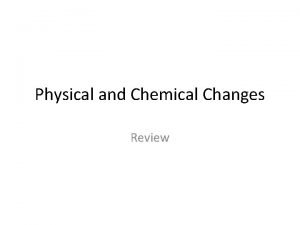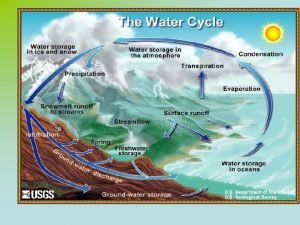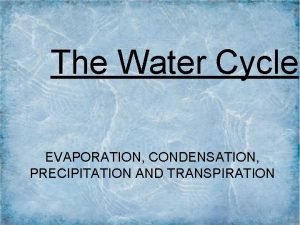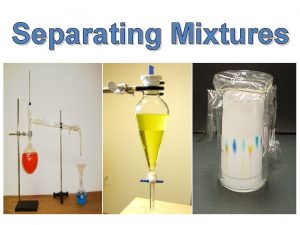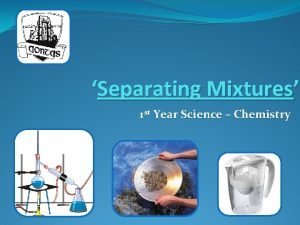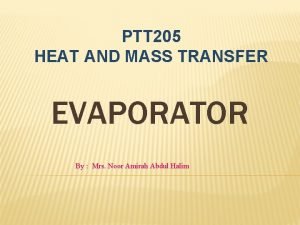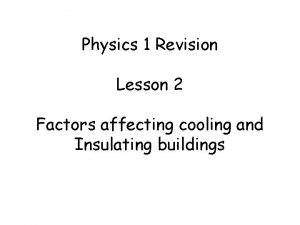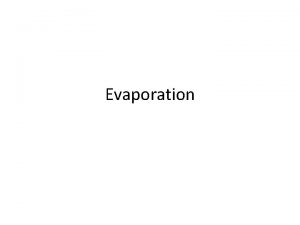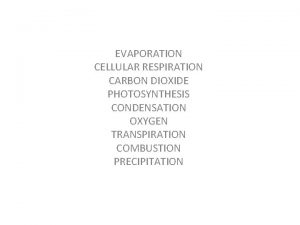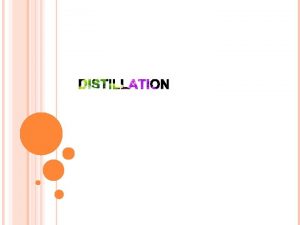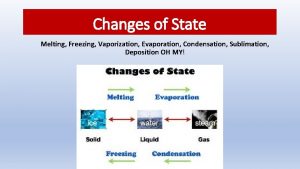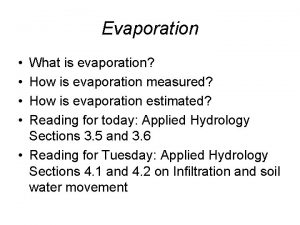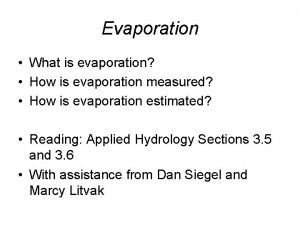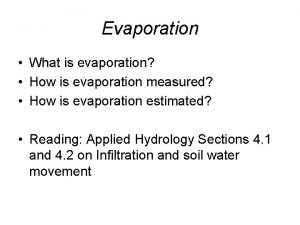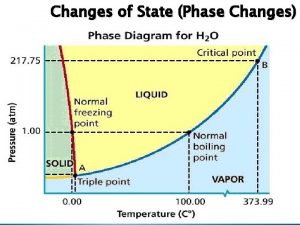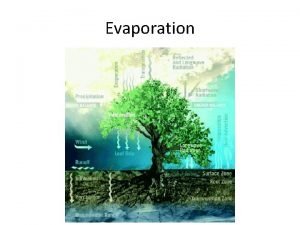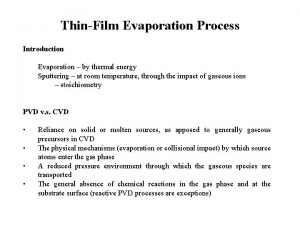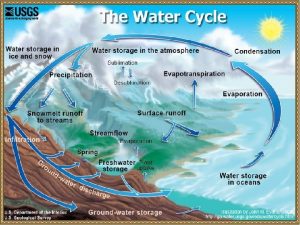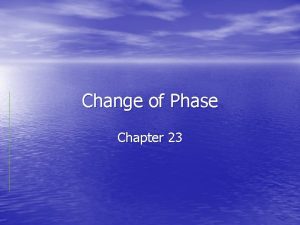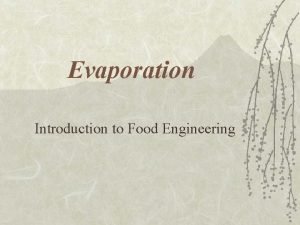Evaporation Evaporation is a process of vaporizing large













- Slides: 13

Evaporation • Evaporation is a process of vaporizing large quantities of liquids (volatile) to get a concentrated product. . • Evaporation is the removal of solvent from the liquids (solution/mixture/aq. extract) by boiling the liquor in a suitable vessel and withdrawing the vapours, leaving the concentrated liquid residue in the vessel. • Equipment used called Evaporators

• Application • Manufacture of bulk drug • Manufacture of biological products

• Factors Influencing Evaporation 1. Temperature 2. Vapor Pressure 3. Surface Area 4. Moisture content in the feed 5. Type of product required 6. Time of evaporation 7. Film and Deposits

• Classification I. Evaporators with heating Medium in Jacket eg. , Steam jacketed kettle (evaporating Pan) II. Evaporators with tubular heating surface A. Evaporators with tubes placed horizontally eg. , horizontal tube evaporator B. Evaporators with tubes placed vertically i) Evaporators with short tubes a) single effect Evaporators eg. , short tube vertical Evaporators b) multiple effect evaporators. , triple effect Evaporators ii) Evaporators with long tubes a) Evaporators with natural circulation. , climbing film Evaporators b) Evaporators with forced circulation. , forced circulation


Advantages: 1) suitable for concentrating aq and thermostable liquors 2) both for small and large scale purpose 3) cost of maintaince and installation is low 4) stirring and removal of products is easy Disadvantages: not suitable for heat sensitive materials Boiling point of the liquor can not be reduced

Advantages: 1) suitable for non viscous liquors 2) both for small and large scale purpose 3) cost of maintaince and installation is low Disadvantages: Liquids should be maintained above the tubes

Advantages: 1) no of tubes increases surface area of liquor 2) both for small and large scale purpose 3) circulation enhances the rate of heat transfer Disadvantages: Liquids should be maintained above the calendria

Advantages: 1) no of tubes increases surface area of liquor 2) for thermolabile substances insulin, liver extract, vitamins 3) suitable for foam forming liquids Disadvantages: expensive, quite complicated large head space required

Advantages: 1) no of tubes increases surface area of liquor 2) To separate volatile and non volatile liquids, also for viscous liquids 3) suitable for heat sensitive material, for extraction of yeasts, caffiene Disadvantages: expensive, cyclone separator is needed required


Multiple-effect evaporators: A multiple-effect unit consists of a series of single-effect evaporators. Vapor from the first evaporator is used as the heat source to boil liquid in the second evaporator. Boiling is accomplished by operating the second evaporator at a lower temperature than the first. The process can continue through evaporators (effects).

 Is breath fogging a mirror a physical or chemical change
Is breath fogging a mirror a physical or chemical change What is evaporation in plants
What is evaporation in plants Evaporation is when
Evaporation is when Filtration is used to separate
Filtration is used to separate Separation example
Separation example How to separate salt and sand chemistry
How to separate salt and sand chemistry Principle of kettle evaporator
Principle of kettle evaporator Factors affecting evaporation
Factors affecting evaporation Deposition phase change
Deposition phase change Duhring's rule
Duhring's rule Water molecule evaporation
Water molecule evaporation Evaporation and respiration
Evaporation and respiration Steam distillation applications
Steam distillation applications Particles of condensation
Particles of condensation
